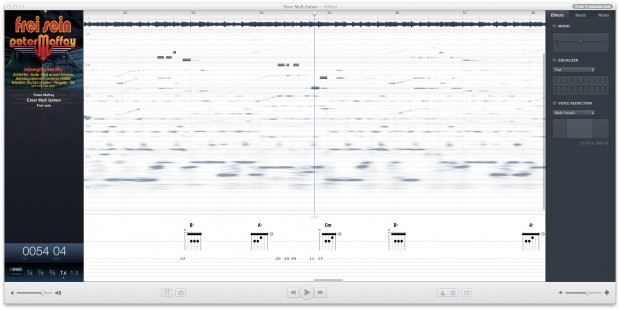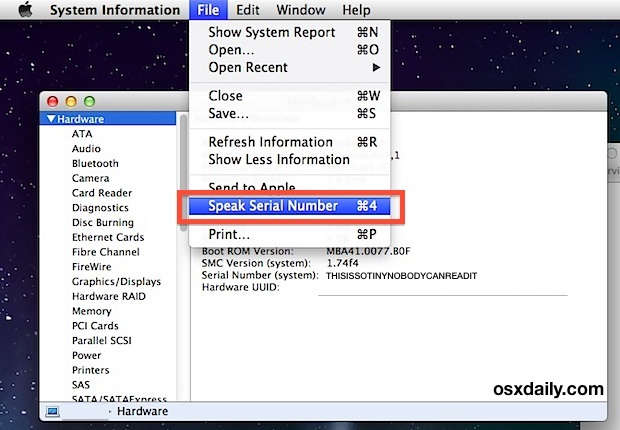Note: The headings on this list indicate the Macintosh System bundle names; the bullet points indicate the version of the System File included in that bundle. This is to make it clearer for people searching for specific bundle versions as opposed to System File versions. Finder File versions are not indicated. 1 Classic Mac OS 1.1 Macintosh System Software (0 - 0.3) 1.1.1 System File 1 1.1.2.
Check compatibility
- Working with Capo. Unfortunately, it is not easy to tell whether or not you own a song using the Music app on iOS. To be frank, that is sort of the point—Apple Music was designed to keep things simple for the average user. With that said, Capo will always show you the.
- Capo 3.5.7 – Slow down and learn to play your favorite songs. Capo lets you slow down your favorite songs so you can hear the notes and learn how they are played. With Capo, you can quickly tab out.
- Truly a gem among the other Mac OS apps! I can easily recommend this app to my musician friends. If you are on an iPhone, there is Capo for iPhone too but it doesn’t have the Chords detection engine unfortunately. For more features such as the tablature generation and other information, head off to Capo for Mac website.
- With just a bit of work and Jack OS X, for example, I can also use DSP Quattro as a sound enhancer similar to Hear, DPS, AstoundSound, iWOW, etc. I haven't tried it system wide, though. So for my needs $50 is just too much for Capo.
You can upgrade to OS Yosemite on any of the following Mac models. Your Mac also needs at least 2GB of memory and 8GB of available storage space.
MacBook introduced in 2009 or later, plus MacBook (13-inch, Aluminum, Late 2008)
MacBook Air introduced in late 2008 or later
MacBook Pro introduced in mid 2007 or later
Mac mini introduced in early 2009 or later
iMac introduced in mid 2007 or later
Mac Pro introduced in early 2008 or later
Xserve models introduced in early 2009
To find your Mac model, memory, storage space, and macOS version, choose About This Mac from the Apple menu . If your Mac isn't compatible with OS X Yosemite, the installer will let you know.
Make a backup
Before installing any upgrade, it’s a good idea to back up your Mac. Time Machine makes it simple, and other backup methods are also available. Learn how to back up your Mac.
Get connected
It takes time to download and install OS X, so make sure that you have a reliable Internet connection. If you're using a Mac notebook computer, plug it into AC power.
Download OS X Yosemite
Capo For Mac Os X 10.13
For the strongest security and latest features, find out whether you can upgrade to macOS Catalina, the latest version of macOS.
If you still need OS X Yosemite, use this link: Download OS X Yosemite. A file named InstallMacOSX.dmg will download to your Mac.
Install the macOS installer
Double-click the downloaded file to open a window showing its contents. Then double-click the file within, named InstallMacOSX.pkg.
Follow the onscreen instructions, which will guide you through the steps necessary to install.
Begin installation
After installation of the installer is complete, open the Applications folder on your Mac, then double-click the file named Install OS X Yosemite.
Click Continue and follow the onscreen instructions. You might find it easiest to begin installation in the evening so that it can complete overnight, if needed.
Allow installation to complete
Please allow installation to complete without putting your Mac to sleep or closing its lid. Your Mac might restart, show a progress bar, or show a blank screen several times as it installs both OS X and related updates to your Mac firmware.
Learn more
- OS X Yosemite won't install on top of a later version of macOS, but you can erase your disk first or install on another disk.
- You can use macOS Recovery to reinstall macOS.
Capo For Mac Os X 10.8
Last year we wrote about a new product from SuperMegaUltraGroovy Software called Capo. The well-designed software was essentially a tool to help users learn to play music by ear, and it worked by slowing down songs without changing their pitch. Capo restored our confidence that not all competent developers were focusing on the iPhone, and that there could still be high quality software for the Mac. Now, Capo 2 has launched. While one developer can’t support an entire platform, Chris Liscio is still making really great software.
At its root, Capo 2 still focuses on slowing down music without changing the pitch, enabling users to practice along with difficult passages of music. The technique has been used since the days of record players, and is one that many budding musicians are familiar with. The core functionality of Capo is still there, and if you are interested in learning more, you can read what we had to say about the original version of Capo.
In the newest version of Capo, the waveform view has changed to spectrogram. Now instead of seeing the fluctuating amplitude of the music, you actually see the individual pitches. Individual tones are represented by what can only be described as smears; the view looks a lot like an old time piano roll.
Capo For Mac Os X 10.7
The higher the pitch on the spectrogram, the higher it is represented; the longer the streak, the longer the duration of the note. On its own, the spectrogram would only be mildly useful, as it only shows you the relative distance between notes. What makes Capo 2 remarkable is that a user can trace the smears of the music and, in turn, automatically create tablature. (This was enough to make me drop a few expletives in amazement.) If you click on a given smear, the note representing the pitch gets played back to you.


Music with just a solo guitar can work well, and with an entire band, it works better than you'd think. You still have to use your ear to differentiate between instruments, but as you use the application, you learn to read which notes are the fundamentals and which notes are part of the overtone series.
Capo For Mac Os X 10.10
Generally speaking, the darker the smear, the more likely it's the note being played, although quiet notes can also be displayed very faintly. Luckily, you can increase the contrast of the spectrogram, allowing even the faintest of notes to be seen. The feature is amazing, and the more you use it, the better you get at using it.
The instrument you're creating tablature for doesn’t have to be a guitar either; Capo will tab out parts for bass, mandolin, and ukelele. The application will also deal elegantly with just about any tuning you can think of—there are over 50 for guitar alone. You can also adjust the tablature to take into account a capo and, if a user feels that the string the note is being displayed on in the tablature isn’t the best option, it can be easily changed.
The feature isn’t all roses, though. Since the application's UI doesn’t resize vertically, you only get a smidgen under three octaves at a time on the spectrogram. Also, the mapped notes on the spectrogram don’t play back with the music. This would be helpful to see how accurately the tablature matches the audio of your song, but unfortunately, we were told that this was largely a performance issue. At this time there is also no way to print tablature created by the app; instead, you need to open the application every time you want to reference it.
The other major feature in the newest version of Capo 2 allows a user to place chord markers throughout a song, which is helpful when you are playing along. Incredibly, Capo can also make an educated guess of what chord is being played based on the frequencies it examines at a particular point in the music.
While it isn’t 100 percent accurate, the feature is impressive. Capo can recognize major, minor, diminished, augmented, minor 7, major 7, dominant 7, suspended 2, suspended 4, and add 9 chords. And, even more types of chords can be entered in manually. Sometimes Capo comes up with the wrong chord—the algorithm it uses isn’t perfect—and that’s when you have to use your ear to make some corrections. Generally, it’s not far off though, and sometimes a starting point is all some people need.

Capo 2 is a $19 upgrade for Capo 1 users, or $49 for new users. SuperMegaUltraGroovy Software has made a demo available that allows 5 minutes of work on any song. The application is a great tool for budding musicians, and is a glowing example of well-written Mac OS X software.
